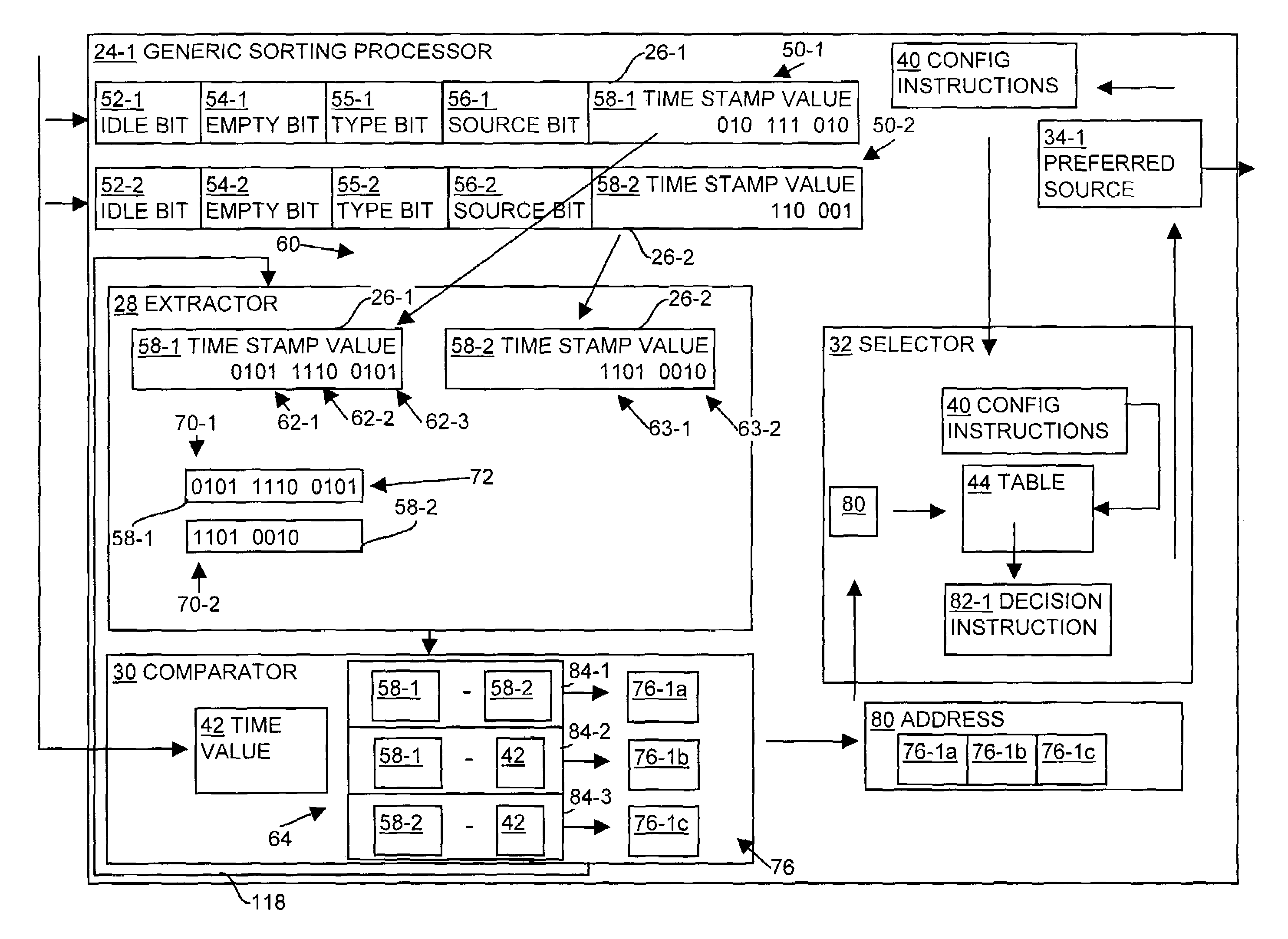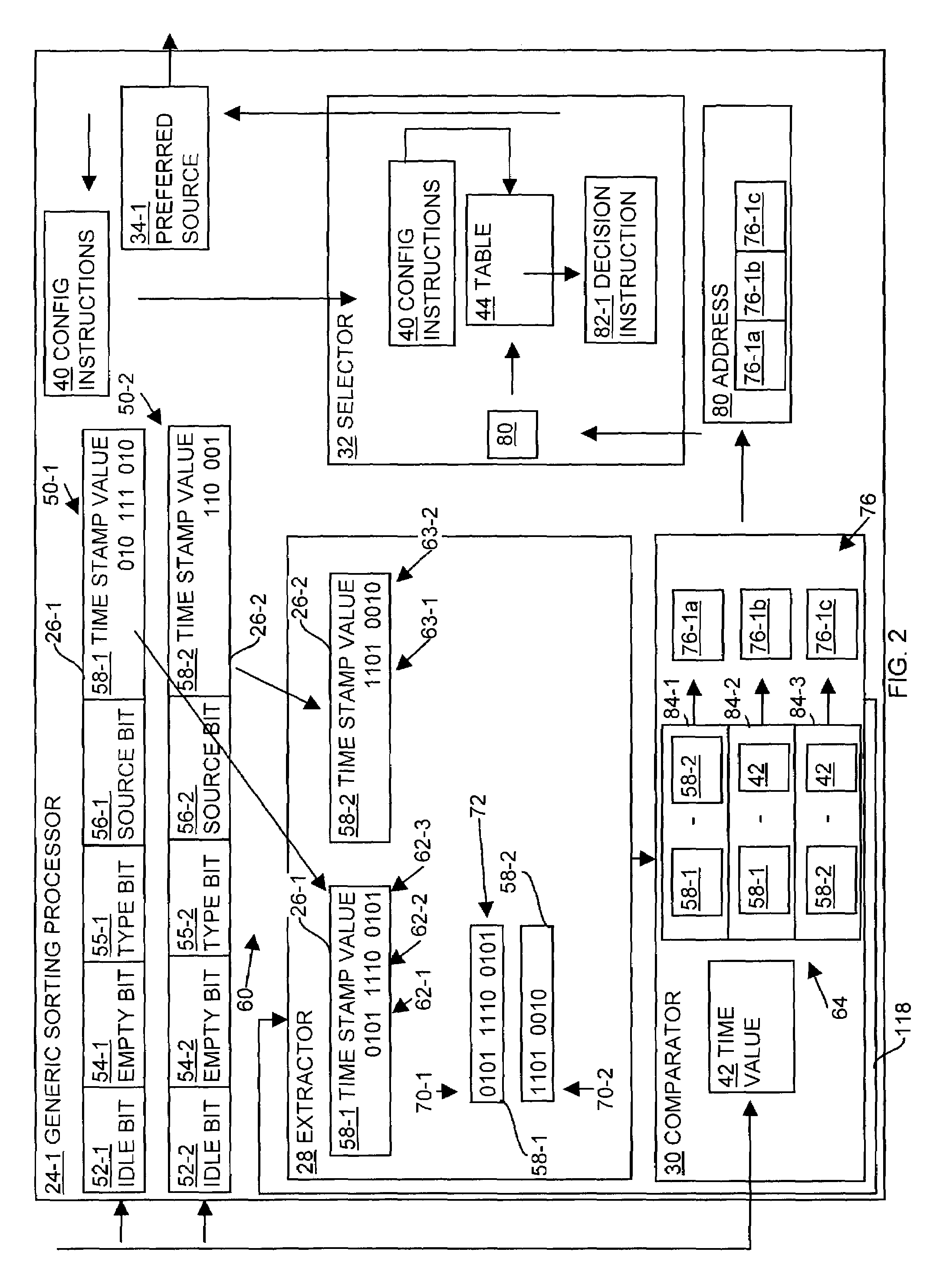Methods and apparatus for scheduling operation of a data source
a data source and scheduling operation technology, applied in the field of methods and apparatus for scheduling operation of a data source, can solve the problems of changing scheduling requirements, dynamic and frequent change in scheduling requirements of data communication devices, computer systems and communications networks, etc., and achieve the effect of high bandwidth data flow
- Summary
- Abstract
- Description
- Claims
- Application Information
AI Technical Summary
Benefits of technology
Problems solved by technology
Method used
Image
Examples
Embodiment Construction
[0027]A computerized device has dynamically modifiable hardware, such as an ASIC, that performs queue-scheduling operations. The hardware incorporates a generic sorting processor (GSP) that is dynamically changeable and configurable to implement various sorting algorithms to meet specific queue scheduling requirements for the computerized device. Sorting algorithms are relatively complex and change over time. The GSP, therefore, allows modification to the queue sorting functionality of the computerized device without replacement of the ASIC associated with the computerized device. The hardware (e.g., ASIC), therefore, provides relatively high-speed responsiveness and performance with respect to scheduling queue operations and is software configurable (e.g., via the GSP) to allow for changes or reconfiguration of the scheduling or sorting algorithms (e.g., software) for queue scheduling requirements.
[0028]FIG. 1 illustrates a computerized device 20, according to one embodiment of the...
PUM
 Login to View More
Login to View More Abstract
Description
Claims
Application Information
 Login to View More
Login to View More - R&D
- Intellectual Property
- Life Sciences
- Materials
- Tech Scout
- Unparalleled Data Quality
- Higher Quality Content
- 60% Fewer Hallucinations
Browse by: Latest US Patents, China's latest patents, Technical Efficacy Thesaurus, Application Domain, Technology Topic, Popular Technical Reports.
© 2025 PatSnap. All rights reserved.Legal|Privacy policy|Modern Slavery Act Transparency Statement|Sitemap|About US| Contact US: help@patsnap.com



